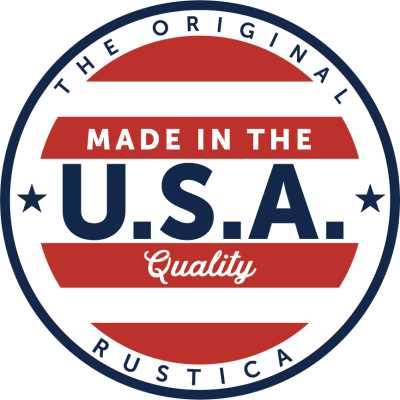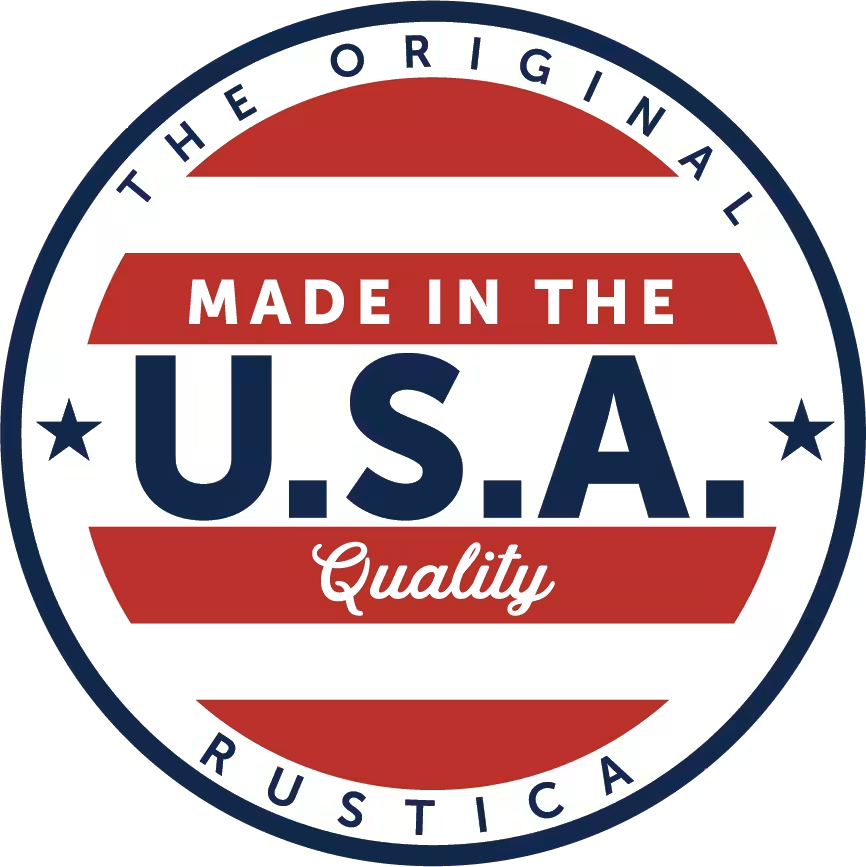Pros of Plexiglass
- Lightweight
- Durable
- Easy to Work With
- Clearer Than Glass
- UV Resistant
Cons of Plexiglass
- Not Very Scratch Resistant
- Not Heat Resistant
- Prone to Yellow in the Sun
- Not Eco-Friendly
What is Plexiglass (aka Acrylic Glass)?
While plexiglass and acrylic glass both have the word “glass” in them, they are not a true glass. True glass is made from molten silica sand and other materials, whereas acrylic glass is made of plastic.Specifically, plexiglass sheets are a type of clear petroleum-based thermoplastic. Its official name is Poly (methyl methacrylate), or PMMA. A thermoplastic is a man-made plastic product classified as a “material that becomes softened and flexible” when heated. It was developed in 1928 as a safer and stronger glass alternative initially used for war, such as vehicle and airplane windows, canopies, and more.
The name “plexiglass” comes from the trademark name, Plexiglas®, given by one of the original manufacturing companies that developed acrylic glass. Other companies also have trademarks for acrylic glass, including Perspex®, Lucite®, and Acrylite®. These are all essentially the same product: transparent acrylic glass.
Clear acrylic comes in a variety of shapes, sizes, and thicknesses. Typically, they come in sheets, rods, or tubes, depending on what project they’re needed for. They can also be made in virtually any color or tint, such as tinted plexiglass or frosted plexiglass. Custom plexiglass can also come in whatever size, shape, thickness, or color wanted. Furthermore, plexiglass can be treated similarly to ordinary glass with special coatings, such as UV protection, low e, and anti–glare.
As mentioned, plexiglass is fundamentally different from other types of glass due to its chemical structure and how it’s made. There are many types of (true) glass, such as annealed glass, laminated glass, tempered glass, and more. However, acrylic glass is most often compared to tempered or laminated glass, as those are its closest competitors.
Both of those glass types are considered safety glasses, as they are strong, break-resistant, and pose less of a threat to human safety than annealed glass. Plexiglass is also used in similar structures, as it’s much stronger than annealed glass and even stronger than tempered glass.
Pros of Plexiglass
1. Lightweight
One of the greatest advantages of acrylic glass is that it’s two times lighter than standard glass. This is because the plastic material used to make acrylic panels is lighter than true glass. And what’s more, acrylic plexiglass is much stronger than standard glass—up to 30 times stronger! So, even though it’s a lighter material, it’s stronger and more durable than regular annealed glass.This makes plexiglass an easy material to work with for DIY projects, and it’s less expensive to ship than other types of glass. Its ease of use, clear surface finish, and incredible strength make it an ideal material for a plexiglass shield or physical barriers where you still need to see what’s on the other side, such as a retail display. Because of how light it is, it’s the perfect material for face masks or face shields, as you can comfortably wear it without it being too heavy for one’s head.
2. Durable
Not only is plexiglass much stronger than standard glass, but it also has incredible impact resistance. This means it requires a significant amount of pressure and force to break when compared to traditional glass.Its impact resistance and durability are due to it being a more flexible material. When a material can “flex” against pressure, it's much harder to break. With its impressive strength and impact resistance, plexiglass is highly durable.
Its durability and optical clarity make it a valuable versatile plastic material that can be used for a variety of projects. As mentioned above, there are different types of acrylic glass, and some are stronger and more durable than others. For example, polycarbonate (a type of clear plastic sheet) is used for structures that need the strongest impact resistance, making it the most durable type of plexiglass available.
3. Easy to Work With
One of the key advantages of plexiglass (as compared to standard or tempered glass) is how easy it is to work with. Not only does its lightweight structure make it easy to handle, but it can also be sawed, drilled, bent, and scored.Standard annealed glass can be cut and drilled, but requires special skill and tools. Tempered glass, on the other hand, can’t be cut, drilled, or scored after it’s gone through the tempering process. That’s why tempered glass windows are a custom design that requires precise measurements.
With custom plexiglass, you can saw, drill, or score it for whatever project you have. Because it responds to heat, you can use a heat gun or hair dryer to bend into the shape you need. In contrast, glass cannot be manipulated as easily, as it requires extreme temperatures for it to reach a melting point where it can be shaped or bent.
With how functional a plexiglass sheet is, it’s one of the best materials for projects when you need a clear surface and room for customization.
4. Clearer Than Glass
Surprisingly, high-quality plexiglass is clearer than glass! In fact, clear acrylic offers up to 92% transmissivity, even with relative thickness, while regular glass offers around 80-90%.Because of this, it can be used in many of the same ways regular glass is used, with even more clarity. This is why plexiglass is used for retail displays and museum exhibits: it protects valuable items while offering optical clarity.
While clear acrylic is clearer than glass, it’s important to note that it’s a softer material than glass, making it subject to scratches and imperfections. Because of this, a clear cast acrylic sheet requires special care and regular cleaning to maintain its transparent appearance.
5. UV Resistant
Some types of plexiglass, including acrylic, are UV resistant, which means it reduces the amount of UV light entering a space. Glass allows UV rays to pass through, specifically UV-A, which is the UV ray that causes sunburns and damages indoor furnishings.Because of plexiglass’s UV protection properties, it can be used for outdoor structures and windows in the same way glass is used. However, plexiglass is prone to yellowing in the sun, so it may need further coatings to prevent this process.
Furthermore, plexiglass is vulnerable to warping in heat, which can be a problem if the plexiglass is exposed to direct sunlight on hot summer days.
Cons of Plexiglass
1. Not Very Scratch Resistant
One of the biggest disadvantages of using plexiglass over regular glass is how soft it is. “Soft” refers to how a material measures on the Mohs scale: a hardiness scale that runs from one to 10 that is used in classifying minerals. It defines a mineral or material's relative resistance to scratching by scratching the material against another material. For instance, a diamond is classified as a 10 on the Mohs scale, whereas glass (specifically tempered glass) has a hardness of about six.In contrast, a plexiglass surface has a hardness of about three, and can be scratched by hard pencil lead, so it is actually measured on the “pencil” scale. This means that it is highly susceptible to scratches. When using an acrylic plexiglass sheet for a DIY project, you have to be very careful with the material in order to avoid scratching it. For this reason, plexiglass isn’t typically used for furnishings or items that receive frequent daily use, such as glass table tops.
2. Not Heat Resistant
While acrylic plastic can be used as safety glass in certain applications, such as physical barriers, it doesn’t meet all the requirements that safety glass has to meet. For example, safety glass has to be resistant to heat and withstand thermal stress.Plexiglass is not heat resistant—it softens and bends with the use of a heat gun. While this is a useful benefit for projects where you need to shape the plastic, it’s not beneficial in areas where you need the plexiglass to withstand thermal stress. This includes south-facing windows and doors/windows that require safety glass in commercial buildings.
In contrast, tempered glass can withstand much hotter and more extreme temperature changes than annealed glass or plexiglass. Heat-strengthened glass has a temperature difference threshold of around 500 degrees Fahrenheit. Because of its incredible resistance to heat, thermal breakage is not much of a concern with tempered glass.
3. Prone to Yellow in the Sun
Acrylic glass is clearer than regular glass, but that benefit is short-lived if the plexiglass sheet is exposed to UV rays and direct sunlight. Certain types of acrylic plastic glass will yellow when exposed to sunlight, which can be unattractive and give it a low-quality appearance.However, as mentioned earlier, plexiglass is also UV resistant. You might be wondering how a material can be so paradoxical, and it comes down to the type of plexiglass used and if the plexiglass has any special coatings. When purchasing a clear cast acrylic sheet, it’s important to pay attention to the technical information, such as its ability to withstand IV rays and if it’s a non-glare acrylic.
4. Not Eco Friendly
Lastly, the economic cost of plastic fabrication is much steeper than glass. Plexiglass is harder to recycle and reuse than regular glass. Moreover, plastic production is a key contributor to greenhouse gas emissions, and the environmental cost required to make plastic is steep.Every aspect of plastic production creates greenhouse gas emissions, as plastic is made from oil, gas, and coal extracted from the earth through fracking. To build pipelines to extract these materials, natural ecosystems are disrupted and destroyed.
Plus, plastic is not a biodegradable material, and could take thousands and thousands of years to break down. In this way, glass is an eco-friendlier choice for projects than plexiglass.
Is Plexiglass Right for Your Next Project?
Plexiglass is a valuable and versatile plastic material that can be used for a variety of projects. Many DIYers choose plexiglass for their projects because it’s extremely durable, lightweight, and easy to work with. It’s also a great alternative to glass, as it has a clearer view and is UV resistant.
However, plexiglass isn’t the perfect material for every project or home renovation. It’s prone to scratching, vulnerable to heat, and will yellow in the sun if the wrong type of plexiglass is used. Plus, it has a steeper environmental cost than glass.
Given this information, it’s now up to you to decide if plexiglass is the right material for your next project!







